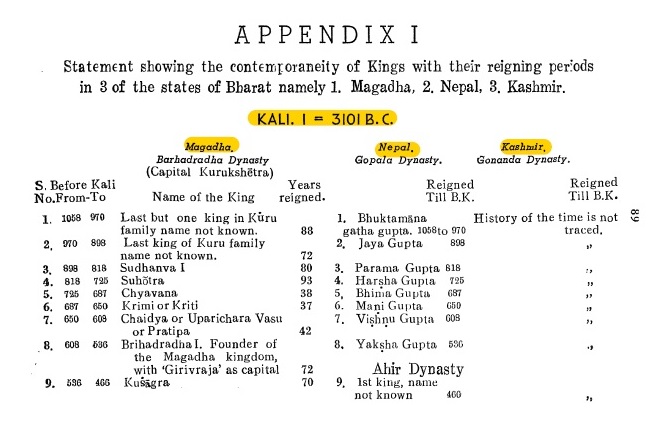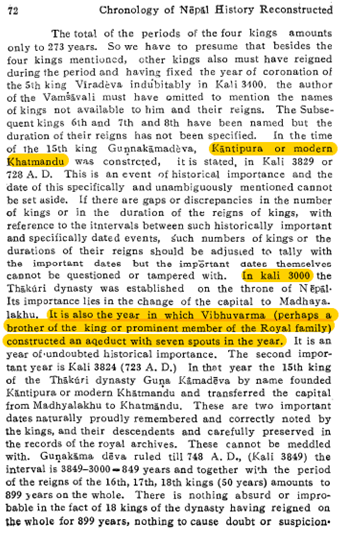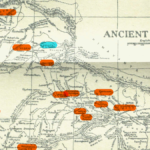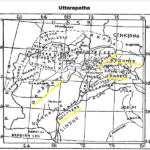
History, as we remarked in our kickoff article on the Satavahana Dynasty, is simultaneously one of the most enlightening and contentious of topics. However, those dedicated to truth will not seek to weaponise it, but dispassionately study it to not only draw valid lessons from it, but to learn the real story of our origins and people. When we lose touch with our underlying identity, divide et impera becomes tres facile.
Continuing our Series on the Charitra of Bharatavarsha is this article on Nepal Origins.
Introduction

Nepal may be a new Secular Republic, but it is an ancient Dharmic land. It traces its history to the Nemi dynasty of the Suryavamsa. From Rajarishi Janaka to Prithvi Narayan Shah, it claims many famous figures who are often dharmic or imperial, and sometimes both.
Kiratarjuniyam is a critical link. It mentions the tribe of mountain-men known as Kiraathas. The god Siva appears in the form of one such and battles Arjuna in order to test him. Kiraatha desa is also mentioned in the Mahabharata proper—doubtless the inspiration of the famous drama. However, typically Nepal is best known through the Mahajanapada Vrijji (Vajji in Paali).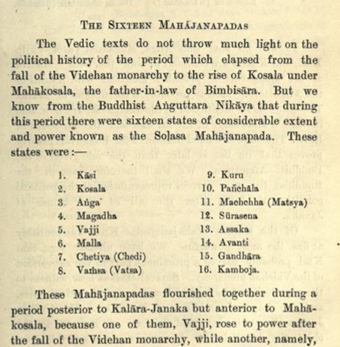
As time went on, another kingdom (Vidheha) would be established. Kosala and Vidheha was separated by the river Sadhaneera. Vidheha was founded by the great King Nemi, who was a descendant of the Royal Solar Dynasty of Ayodhya. His son was Mithi, hence the capital Mithila. Mithi’s son was Janaka. The language region of Maithili is today is known as Mithilanchal. However, the correct name for the desa Vidheha. Nepal today is a combination of it and the Kiraatha country.
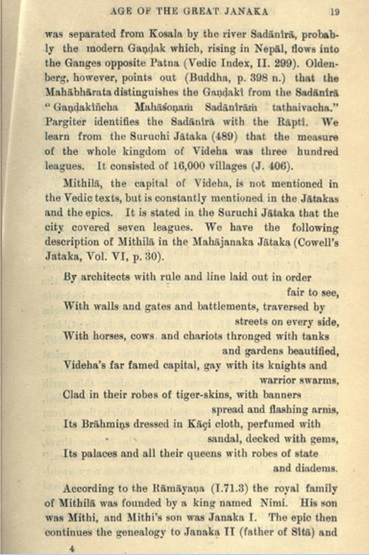
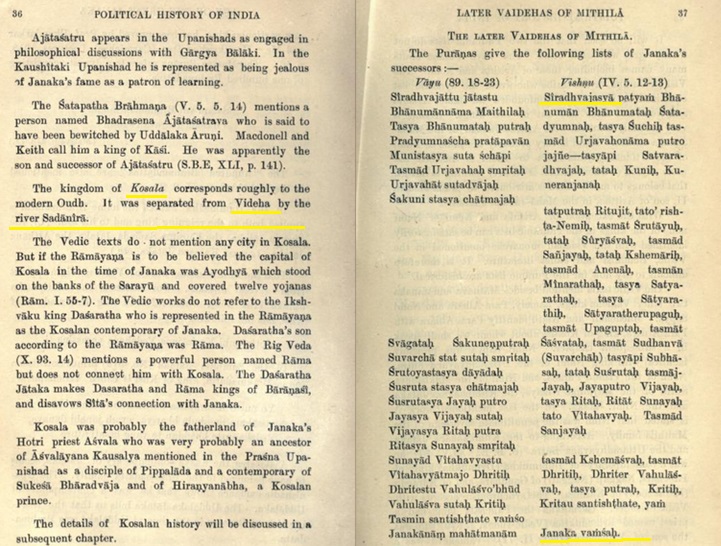
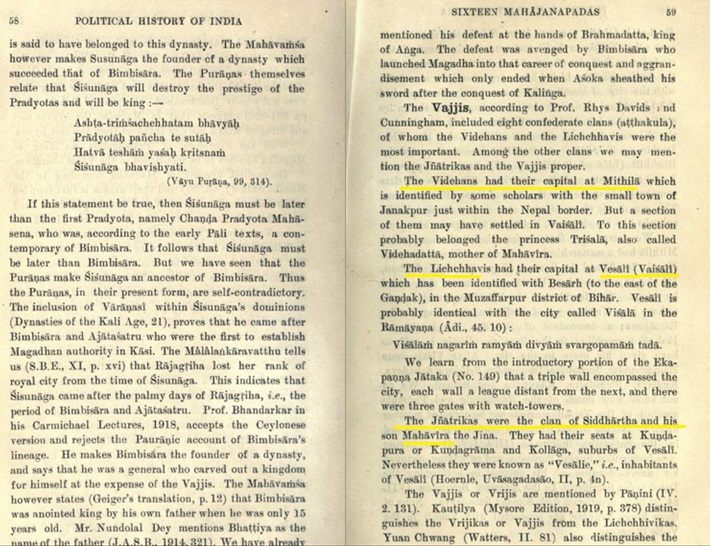
#WATCH | Nepal: Janakpur lit up ahead of the Ram temple 'Pran Pratishtha' ceremony in Ayodhya tomorrow. pic.twitter.com/6rcBzFvDCi
— ANI (@ANI) January 21, 2024
Origins
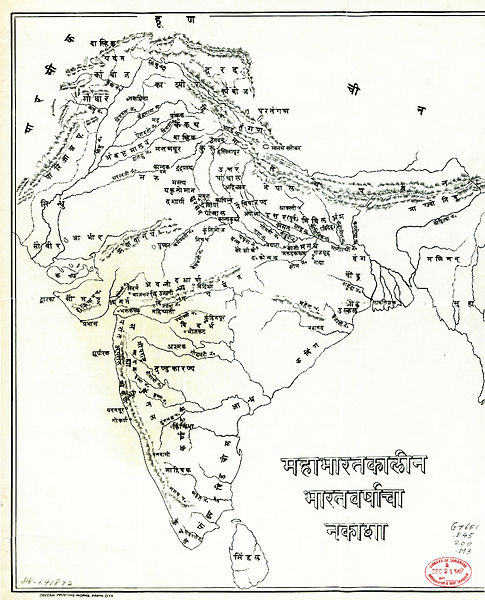
Nepal, as we know it today, is divided between the terai and the hill country. Indeed, it is a fusion of parts of at least 2 ancient desas: Kirata desa and Videha desa (modern Maithili praantha).

Seeradhvaja Janaka was the most famous King of Vidheha and the father of Vaidhehi, aka Seeta Devi. His later descendants, however, we not as enlightened as he was. They were driven from Videha and replaced with a Ganarajya (Republic), which was arguably the first in the Subcontinent’s recorded history.
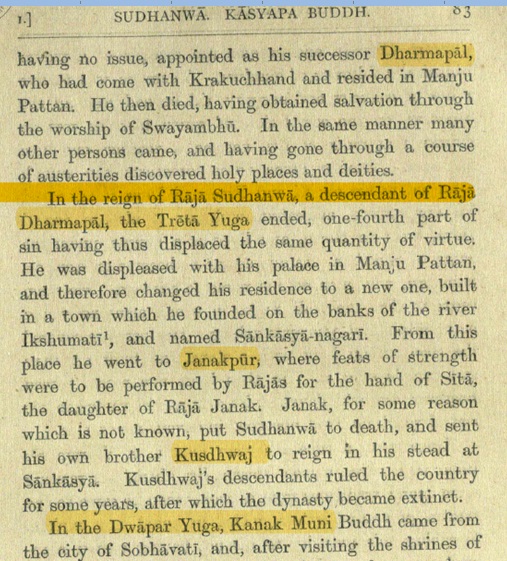
The Vrijji Republic was not a democratic-republic as we know today or a military junta, but rather, was a robust aristocratic-republic that doughtily defended the independence and sovereignty its 7707 knights-raaja.

The Nepali Confederation would then revive under the Licchavis. The name of this dynasty is in fact connected with the Raghukula, and is originates from the lineage of Lakshmana (Lakshmaneyas→ Lachmaneyas→Licchavi).
With the Royal Origins of Nepal now explicated, one may now delve into the Chronology proper.
Chronology
The Bedrock of Nepal’s Chronology is the Nepaala Raaja Vamsaavali. The Royal Chronicle of Nepal may be pilloried in the present time, but it aligns very closely with the Puraanic History of Bhaarathavarsha. In actuality, European observers themselves remarked about Historical Era datings that were shared by Nepal and India.
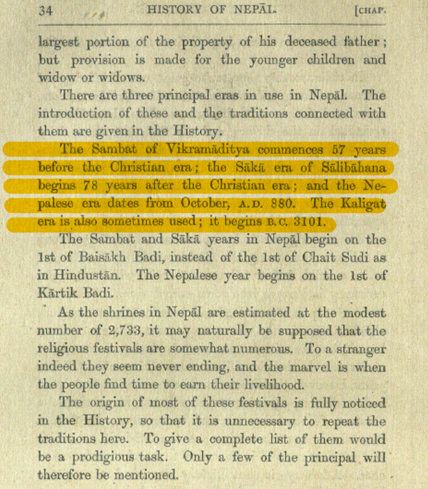
A key matter of controversy is the dating of Amsuvarman. Much like the dating of that other “Sheet anchor of history“, i.e. Chandragupta Maurya’s coronation, Amsuvarman plays the same role for Nepal. Here is Pandith Chelam’s view on the topic.
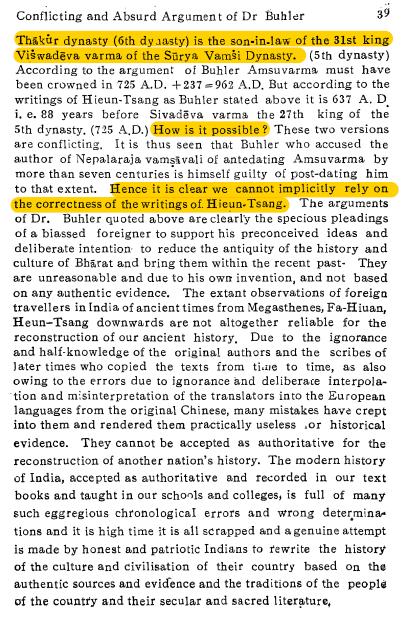
Adi Sankaracharya’s visit and the correct dating of Amsuvarman:

Nepaala Raaja Vamsaavali uses the Kali Yuga dating (3102 BCE), and its history commences in 4159 BCE.
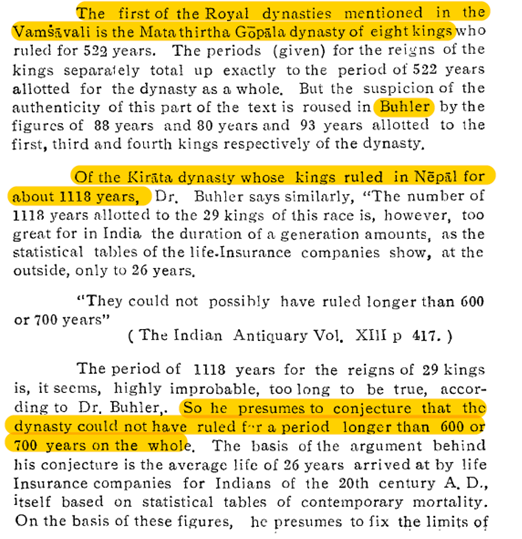
Who were these Kiraathas? This is a question often at the heart of Nepalese identity. The ethnology of this Himalayan state is complex and is rooted in both the Hindu religion as well as the tribal matrix of the region. Here is the modern anthropological view of the topic:
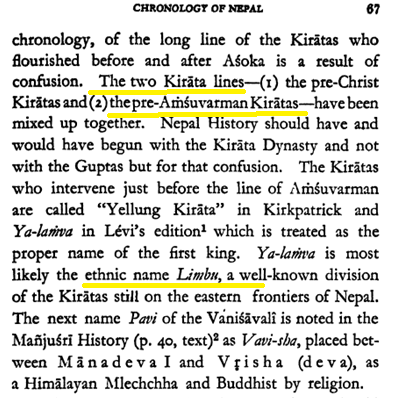
However, it is the religio-cultural view that continues to predominate in the absence of clarity. Indeed, it is the oft-derided dharmic sacred literature (bugbear of casteist-modernists) that provides a harmonising snapshot of the civilizational continuum.
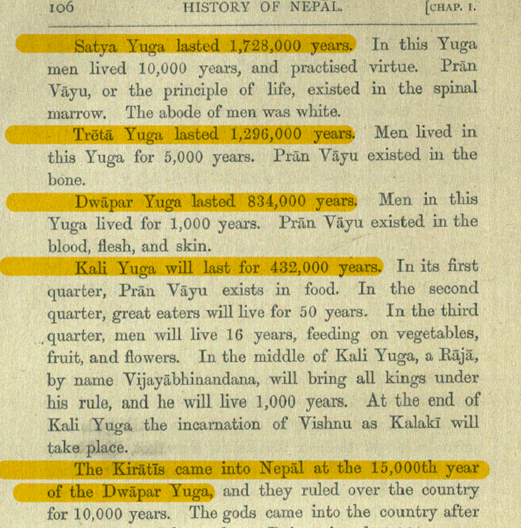
Dynasties
The Dynastic History of Nepal is equal parts straight-forward and controversial. On the one hand is the bedrock text known as the Nepal Royal Chronicle, and on the other hand are the issues that plague it and the historians studying it. However, this is where study by discerning experts among actual practicing Pandiths proves illuminating.
Pandith Chelam did so by cross-reference and collating from Puraanic History and provided insight where there was previously only motivated “rational-empiricism”. He commences the History of Nepal with the Gopala Dynasty.

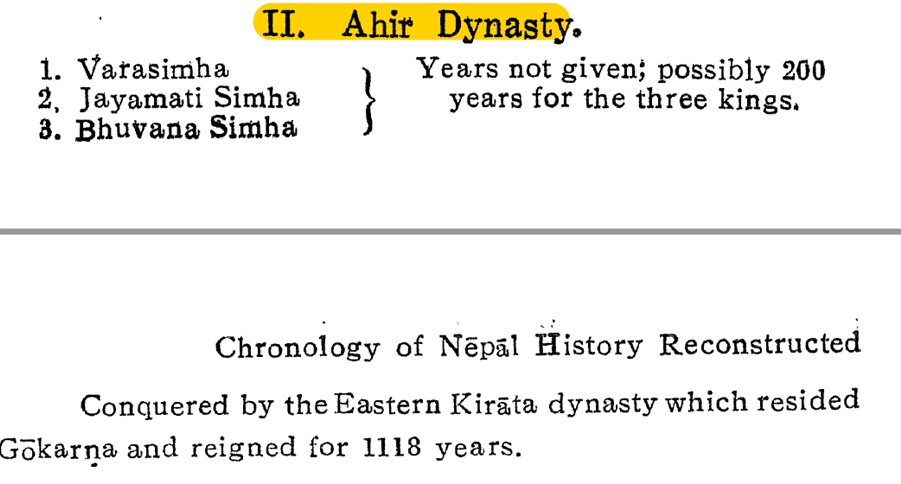
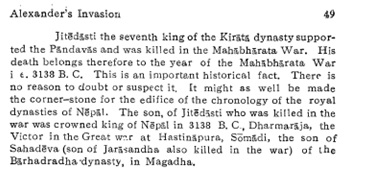

It is fashionable for every Suryavanshi claimant (and his mother) to claim descent from Bhagwan Shri Ram. But Sri Raama’s sacred lineage is not to be toyed with as though it were some trophy to add to a dusty Palace-Hotel shelf. In fact, most authorities consider the lineage to have ended with Brhadhbala in the Kurukshetra War of 3138 BCE. Whatever offshoots might have remained would likely have ended with the rise of Soodhra Mahapadma Nanda who, not for nothing, referred to himself as a second Parashuraama to the blue-blooded Kshathriyas. However, the lineage of Ayodhya continued with Sri Raama‘s famed younger brother (and veritable shadow himself), Lakshmana Dasarathi.
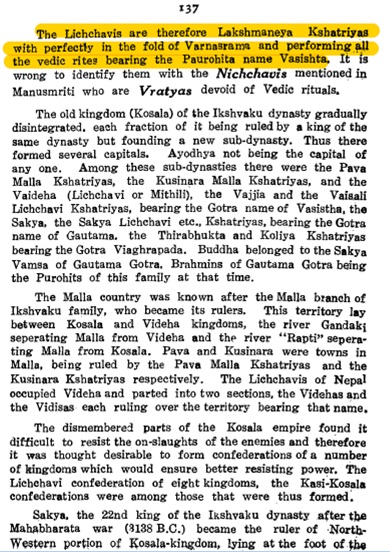

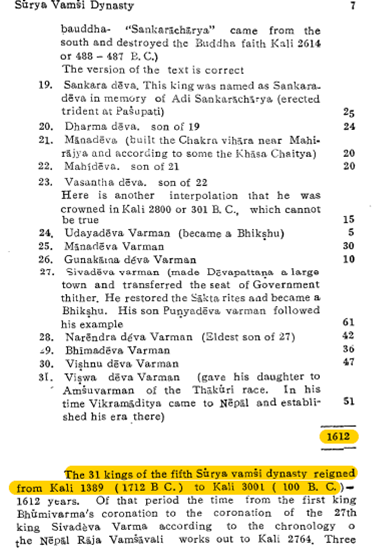
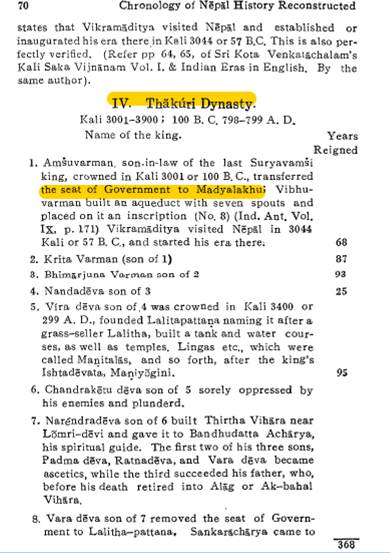
Kaatthmaandu (Kathmandu), also known as Kaanthipura, became the capital of Nepal in this period. In a demonstration of its sophistication in engineering and hydrology, and aqueduct with seven spouts was constructed.
Due to the calamity that struck the Nepaala Raaja Vamsaavali, Pandith Chelam suggests dividing the Thaakuri Dynasty into several lineages. This would account for the dating discrepancies, while preserving the overall integrity of the chronicle (suspicious circumstances having already been mentioned). There remain certain lacunae that are nevertheless filled by comparative chronology. We may conclude this article with that point.

Conclusion
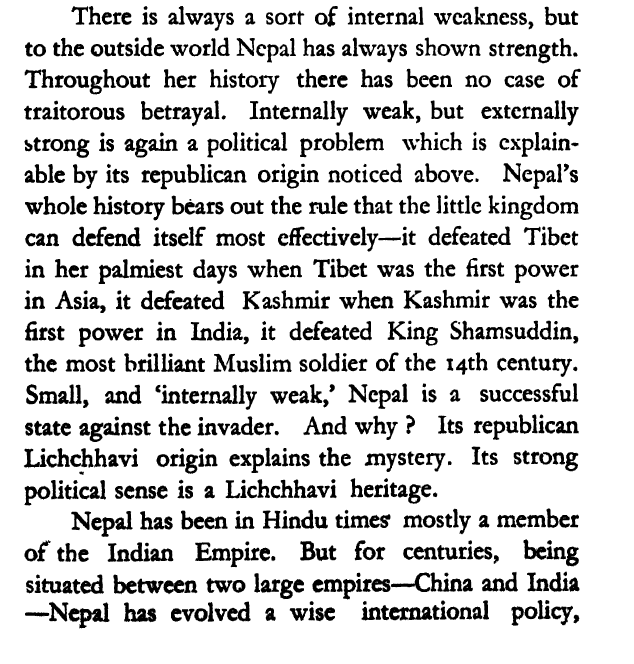
The issues with the Nepaala Raaja Vamsaavali have been conveniently utilised by Indologists (of Western orientation) to cast aspersions on the entire chronicle. What is not highlighted, however, was that the Chronicle itself was burned in a library incident, conveniently during the era in which the British Resident oversaw relations with an effectively subsidiary Nepal (which had supplied troops against the 1857 Revolt).
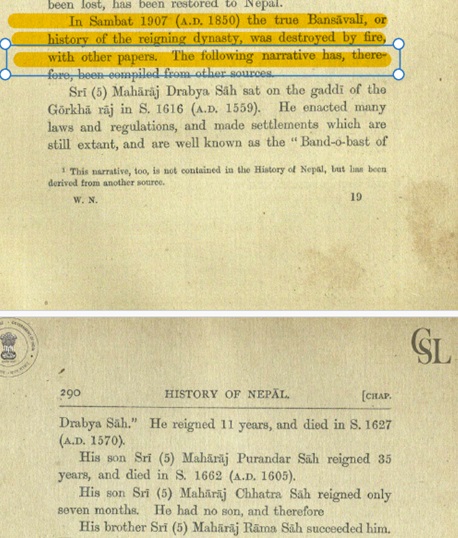
Sidenote: There are many who believe our "modern" history at face-value too and accept anointed heroes uncritically. Mohandas Gandhi has been criticised by numerous parties, but others such as Balgangadhar Tilak have escaped similar scrutiny (one wonders why...). And yet, Pandith Kota Venkatachalam gaaru saw fit to do precisely that.
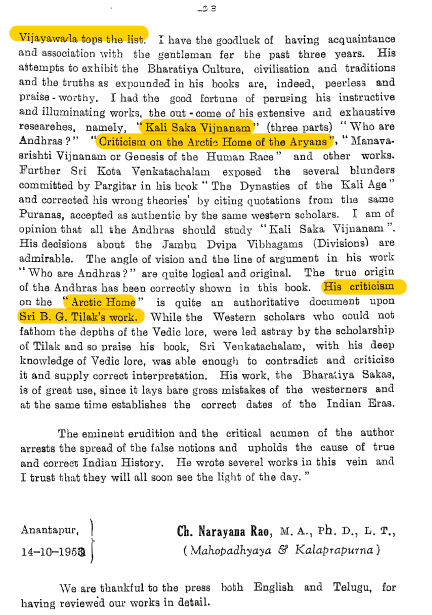
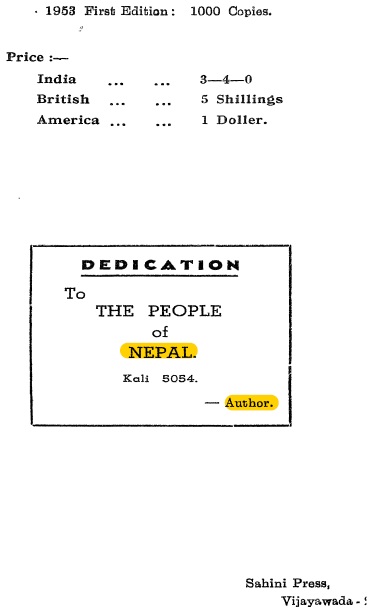
References:
- Kota, Venkatachalam Paakayaji (Pandit). Chronology of Nepal History Reconstructed. Vijayawada: Sahini Press. 1953
- Raychaudhuri, Hemchandra. Political History of India: From the Ascension of Parikshit to the Extinction of the Gupta Dynasty. University of Calcutta. 1923
- Jayaswal, K.P. Chronology and History of Nepal. Varanasi: Bharati Prakashan. 1960
- Singh, Shew Shanker & (Ed.) Daniel Wright. History of Nepal. London. Cambridge.1877

